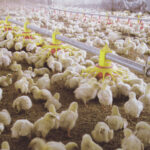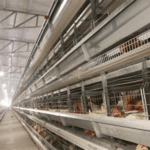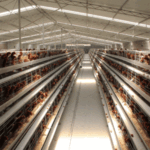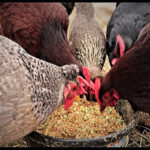Is cheapness the standard when buying chicken farming equipment?
Broiler cage equipment and cage chicken equipment are directly related to the interests of farmers. In many chicken farmers, the ratio of brooding, breeding and laying hens is out of balance and cannot meet the requirements. The rearing area is often too small, the rearing density is too high, and the feed and drinking troughs are not enough. It can be said that this is a common problem among chicken farmers and one of the important factors affecting the economic benefits of laying hens. Let’s take a look at it.
Some chicken farmers raise more chickens, use few or no extra houses to raise chickens, and raise chickens in cages prematurely, which is not conducive to the growth and development of middle-aged chickens, thereby affecting the performance of chickens. Raise laying hens and harvest after the hens lay their eggs. Different grades and unmatched equipment for raising chickens, breeders and laying hens have specifications and ratio requirements. The equipment needs to be matched accordingly, which is conducive to the normal growth and reasonable turnover of chickens, and gives full play to the utilization and operation rate of the equipment, so that the depreciation cost allocation of each hen or each kilogram of eggs is more reasonable, thereby reducing production costs.

Now most of the laying hens are raised in chicken cages of chicken raising equipment, which is an indispensable equipment, so chicken farmers generally pay attention to it. However, the quality of chicken breeding equipment lacks the ability to identify, and the price is often lower when purchased. Chicken raising equipment is the place where hens live, produce and sleep, and its quality cannot be ignored. The quality, width and slope of the bottom of the chicken coop are very important. In the same chicken farm, the author witnessed the difference in the quality of the chicken cages produced by the two manufacturers, which led to obvious differences in egg production, number of dead eggs, and broken eggs.
Another common problem worth noting is that chickens are not housed in cages. When the brood survival rate is high, the number of surviving hens exceeds the transfer budget, or when transferring, they are unwilling to eliminate underweight hens. In this case, they are often overloaded. According to statistics, 22.5% of hens died before 305 days of age, when the number of hens in each cage increased to 5. According to the statistics of production reports accumulated by the author over the years, the laying rate of chickens with cage density exceeding the standard is 5% to 15% lower than that of normal chickens.
The above are the criteria for purchasing chicken farming equipment, so when buying poultry farming equipment, it is not that the cheaper the price is, the better, but the quality should be the basis and the survival rate of the chickens should be considered.











